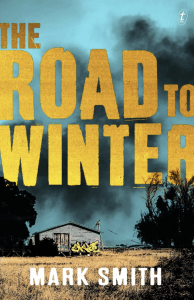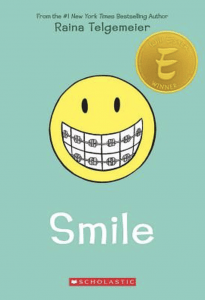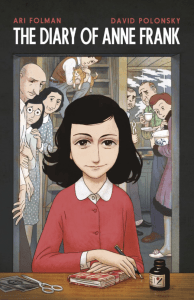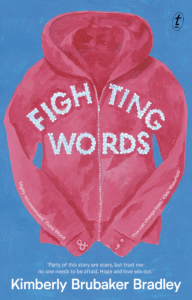
Thanks to everyone who came along to our 24th Book Club meeting in Week 3 to join in the conversation about The end of the world is bigger than love by Davina Bell. Whether you finished the book or not, it was great to participate in a conversation about this unusual and complex novel. Special kudos, though, goes to those who did actually read the entire book!
It was a good book to have a discussion about, as I know the story definitely generated many questions and ‘what?!” moments as we read. Some of these questions were addressed through our group discussion but I think to have our questions completely answered we would need to have a chat with the author. It was amusing to collectively agree that the story really ‘played with our minds’ (which I’m sure Davina Bell intended).
One aspect of the writing we did not have time to discuss was the references to children’s classic literature throughout. What did you think of this? As a reader, I did enjoy this element but, as Mrs Hanratty pointed out to me, not everyone would be familiar with all of the books referenced. However, I think that this might make readers curious enough to follow-up and read the unfamiliar books at a later date.
You might like to read this review in Australian Book Review (it’s the second book featured). The last paragraph seems to sum up the feelings we experienced as a reading group …..
“Depending on your tolerance for surreal and amorphous storytelling, Bell’s slipperiness can feel invigorating and inventive, or frustrating and evasive. That the title itself could easily be flipped around to read The End of Love Is Bigger Than The World is a measure of its open-ended nature.” (On, October 2020, no. 425).
You might also like to listen to this ABC radio interview with Davina Bell:
Davina Bell on her new book The end of the world is bigger than love

If you are interested in reading some other books about pandemic apocalypses, surviving the end of the world or books with similar dystopian or science fiction themes, you might like to check out the following books (which can be reserved in eLibrary):
- The darkest minds by Alexandra Bracken
- The 100 by Kass Morgan (on order)
- The 5th Wave by Richard Yancey
- The road to winter by Mark Smith
- Shatter me by Tahereh Mafi

For our next book club meeting (Week 8, Term 4) we will be discussing graphic novels. In recent years, I have observed the continuous growth in popularity of this format. If you have not yet discovered graphic novels, I envy that you are at the beginning of your graphic novel experience. If you are new to graphic novels, you might be asking about the best place to get started? Well, there’s seminal graphic novels such as Maus and Persepolis and then there’s hugely popular children’s/teen graphic novels about the drama of school life and relatable growing-up pains in books such as Raina Telgemeier’s, Smile.

Finding the right graphic novel does depend on, not only your reading interests, but also your visual tastes. However, do keep an open and willing mind when reading graphic novels. What may seem not so appealing at first (for example, a particular artist’s style of drawings) can totally draw you in as you become aware of the nuances with facial expressions of characters, movement and exchanges of dialogue. Just as with reading a couple of chapters of a fiction book before deciding if you like it or not, be prepared to give a graphic novel time for you to ‘settle in’ to reading it. On the flip side, sometimes you will be immediately and effortlessly drawn to a graphic novel’s storytelling style and artwork which was my experience with Stephen McCranie’s Space Boy series. Other times, it can take a little time to warm to the story and visuals, so be prepared to give yourself that time before passing judgement.
Here’s a long list of graphic novels we currently have in the library’s collection. Browse this list, and if you spot a graphic novel of interest, I recommend you click on the title link to find out what the story is about. If it interests you, login to eLibrary and place a hold on the book (further instructions available here). You will receive an email when it is ready to collect from the library. Alternatively, come and browse the graphic novel collection or come and have a chat so that we can find a graphic novel that appeals to your reading interests.

Despite the growing popularity of graphic novels, every now and again I hear some students say that they don’t read ‘comic’ books (as if to imply that this is inferior to other types of reading or something done in the past in primary school). I beg to disagree! Graphic novels have value no matter what age you are. Both traditional fiction books and visual texts (such as graphic novels) offer readers so much that I don’t think you can overlook either.
Some other graphic novels I have read includes:
- The Great Gatsby (by Nicki Greenberg; adaptation of the novel by F. Scott Fitzgerald) from
- Anne Frank’s Diary: The graphic adaptation (by Ari Folman)
- To Kill a Mockingbird (by Fred Fordham; graphic novel adaptation of ‘To kill a mockingbird’ by Harper Lee)
These graphic novels are particular examples of fiction books that have been adapted into graphic novel format. Both the fiction and graphic novel versions of these texts offer valuable reading experiences for different reasons. Even if graphic novels are not your favourite reading medium, I do encourage you to approach this format with an open mind.
I look forward to our next book club discussion in Week 8. Hopefully, we will also have time to discuss other books you have been reading lately. This will be a good opportunity to share some reading recommendations for the Christmas holidays. Thanks to Ms McNamara for sharing a book she has recently read – The happiest man on earth by Eddie Jaku. I look forward to hearing about this book at our next meeting.
We will also have a reading suggestion for Book Club for the holidays. This book will then be discussed at our first Book Club meeting for 2021 (to be held in Week 3, Term 1).
Enjoy the next couple of weeks until we meet again in Week 8!
Mrs Sylaprany
PS: regarding #23 Book Club meeting – there were no notes for this meeting, just our ephemeral discussion.
References
On, T. (2020, October). Three wildly different Young Adult novels. Australian Book Review, 425. Retrieved from https://www.australianbookreview.com.au/abr-online/current-issue/883-fiction/6898-thuy-on-reviews-loner-by-georgina-young-the-end-of-the-world-is-bigger-than-love-by-davina-bell-and-you-were-made-for-me-by-jenna-guillaume?gclid=Cj0KCQiAy579BRCPARIsAB6QoIY2bN5ENFolrKy_eHroUbEYtm_mPTsXHz2wEmjQT2G7RJvVhw_ZXFEaAv9zEALw_wcB

